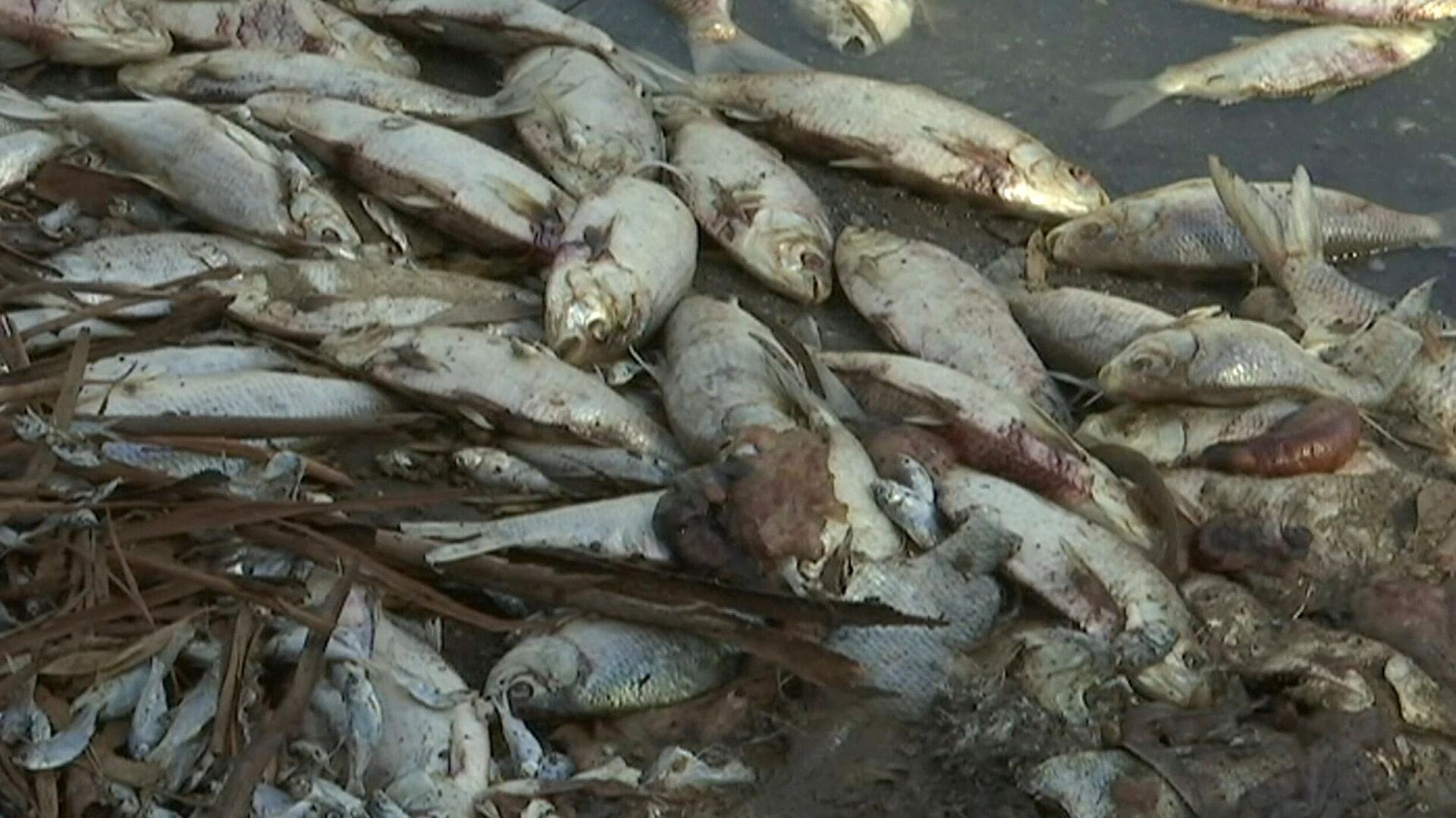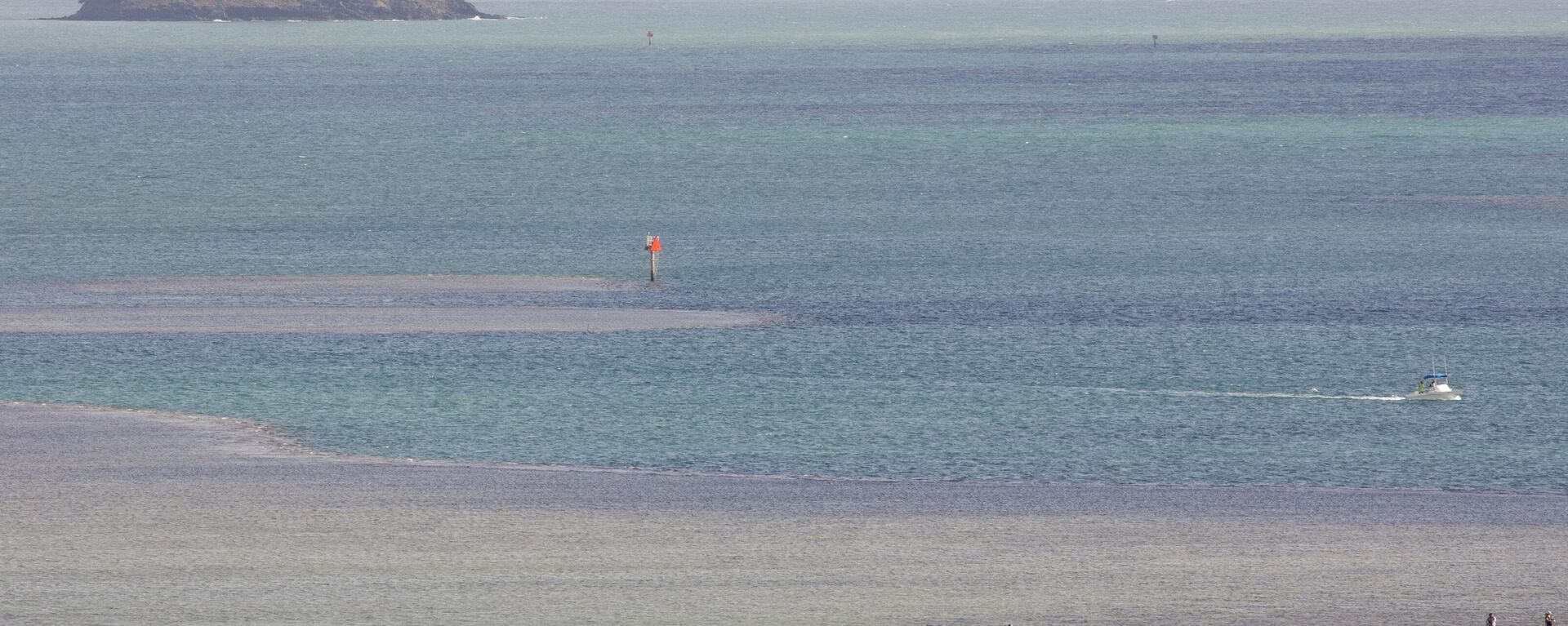https://sputnikglobe.com/20231211/quarter-of-worlds-freshwater-fish-face-extinction---study-1115527314.html
Quarter of World's Freshwater Fish Face Extinction - Study
Quarter of World's Freshwater Fish Face Extinction - Study
Sputnik International
In a comprehensive study the International Union for Conservation of Nature reveals that nearly 25% of the world's freshwater fish are on the brink of extinction.
2023-12-11T23:26+0000
2023-12-11T23:26+0000
2023-12-11T23:23+0000
beyond politics
science & tech
iucn
pacific
united kingdom (uk)
kazakhstan
ecology
extinct species
https://cdn1.img.sputnikglobe.com/img/07e7/03/12/1108529162_0:0:2501:1406_1920x0_80_0_0_e1528be835df7d5f732ad42095503426.jpg
A comprehensive study by the International Union for Conservation of Nature (IUCN) highlights the precarious state of freshwater fish globally, with iconic species such as the Lake Turkana robber and the Mekong giant catfish facing the imminent risk of disappearing.Of the 14,898 assessed species, a staggering 3,086 are now in danger of vanishing, with nearly one-fifth of all threatened freshwater species directly impacted by climate change-induced factors such as falling water levels and shifting seasons.The assessment also sheds light on the escalating threats to other species, including mahogany, Atlantic salmon, and green turtles. Big leaf mahogany, a highly sought-after plant commercially, is now classified as endangered due to a 60% decline in numbers over the past 180 years.Atlantic salmon, once abundant and considered of least concern, is now near threatened, with a 23% global population decline and disappearance from many UK rivers.Amidst these alarming findings, the report also brings attention to positive conservation efforts. The saiga antelope, moving from critically endangered to near threatened, experienced a remarkable 1,100% population increase in just seven years in Kazakhstan. Similarly, the scimitar-horned oryx, once extinct in Chad due to overhunting, has seen successful reintroduction efforts, leading to a vulnerable classification.The assessment also highlights the vulnerability of central south Pacific and east Pacific green turtles, major victims of industrial and artisanal fishing, with rising global temperatures affecting their hatching success and sea temperature fluctuations endangering their nesting sites.
https://sputnikglobe.com/20230725/oceans-increasing-turning-green-over-last-20-years-scientists-say-1112125531.html
pacific
united kingdom (uk)
kazakhstan
Sputnik International
feedback@sputniknews.com
+74956456601
MIA „Rossiya Segodnya“
2023
News
en_EN
Sputnik International
feedback@sputniknews.com
+74956456601
MIA „Rossiya Segodnya“
Sputnik International
feedback@sputniknews.com
+74956456601
MIA „Rossiya Segodnya“
international union for conservation of nature, iucn, extinction, fresh fish
international union for conservation of nature, iucn, extinction, fresh fish
Quarter of World's Freshwater Fish Face Extinction - Study
The alarming conclusion has been drawn from the first-ever IUCN red list assessment of freshwater species, which identifies global heating, pollution, overfishing, and falling water levels as major threats to vital aquatic populations.
A comprehensive study by the International Union for Conservation of Nature (IUCN) highlights the precarious state of freshwater fish globally, with iconic species such as the Lake Turkana robber and the Mekong giant catfish facing the imminent risk of disappearing.
Of the 14,898 assessed species, a staggering 3,086 are now in danger of vanishing, with nearly one-fifth of all threatened freshwater species directly impacted by climate change-induced factors such as falling water levels and shifting seasons.
The assessment also sheds light on the escalating threats to other species, including mahogany, Atlantic salmon, and green turtles. Big leaf mahogany, a highly sought-after plant commercially, is now classified as endangered due to a 60% decline in numbers over the past 180 years.
Atlantic salmon, once abundant and considered of least concern, is now near threatened, with a 23% global population decline and disappearance from many UK rivers.
Amidst these alarming findings, the report also brings attention to positive conservation efforts. The saiga antelope, moving from critically endangered to near threatened, experienced a remarkable 1,100% population increase in just seven years in Kazakhstan. Similarly, the scimitar-horned oryx, once extinct in Chad due to overhunting, has seen successful reintroduction efforts, leading to a vulnerable classification.
IUCN President Razan Al Mubarak has emphasized the need for coordinated global conservation efforts in the face of the interconnected climate and biodiversity crises.
The report underscored the importance of addressing these issues to ensure the durability of conservation actions.
The assessment also highlights the vulnerability of central south Pacific and east Pacific green turtles, major victims of industrial and artisanal fishing, with rising global temperatures affecting their hatching success and sea temperature fluctuations endangering their nesting sites.



